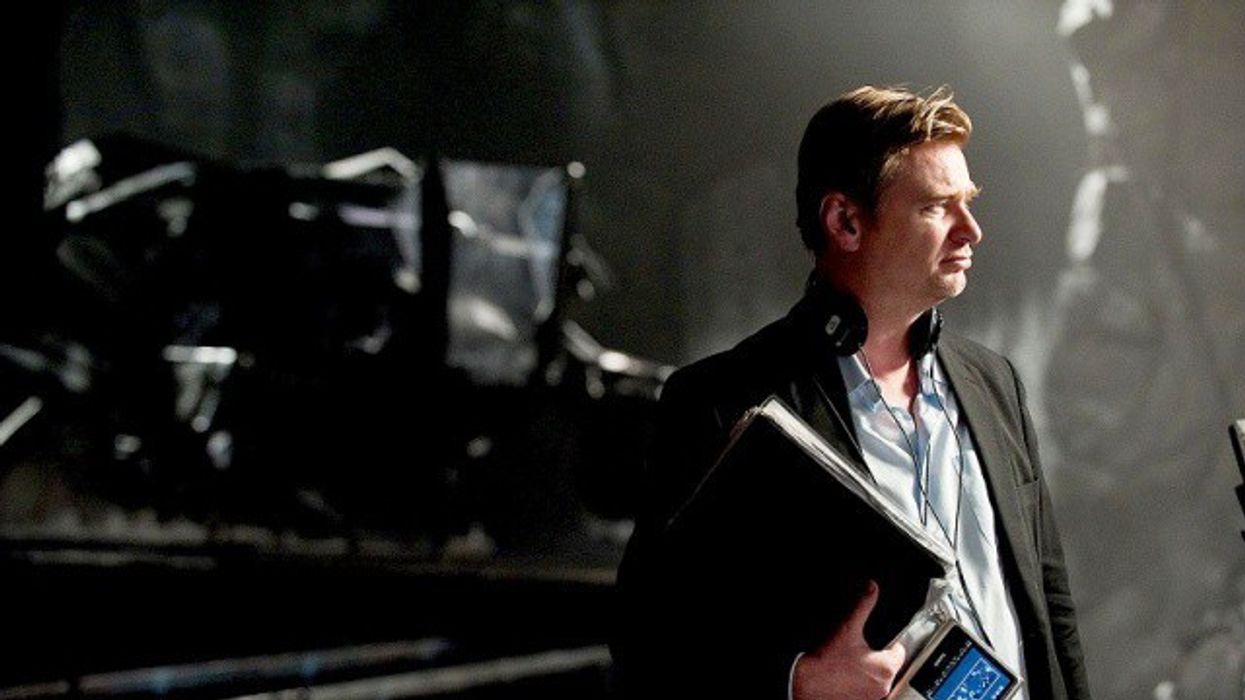3 Budgets, 1 Director: Does Money Change Nolan’s Filmmaking Style?
Nolan has worked at various budgetary levels in his films. Here's how.

It's often hard to look at a director who has made humongous movies and find tangible lessons. That's how I felt about Christopher Nolan for a long time. It seemed to me that he was working at such an enormous level that there was really nothing that could trickle down and apply to me and my process.
Then I remembered that Nolan did not start that way. In fact, like most of us, he had almost no money for his first feature. Still, it was the lessons he learned as a fledgling filmmaker that helped shape where he would go and how he would spend his budgets.
Check out this video from In Depth Cine, where they take a look at the effect that the production budget has had on Following, Memento, and Inception, focusing on how access to money affects the cinematography and storytelling in each film.
Then let's talk after the jump.
How Nolan Shoots Movies at 3 Budget Levels
One of the most admirable things about Nolan's career is how smart he has been about scaling up each one of his projects. Even when he works in the hundreds of millions of dollars, he leaves all the money on the screen.
Scaling up is an important lesson for any filmmaker. But how does the budget change the film? And what does it cost to make the movie on the page?
Let's get some basic info out of the way first. There are four sections of any film budget:
- Above the line
- Below the line
- Post-production
- Other
What goes into each?
Above the line covers writers, directors, and actors. Below the line covers the cinematography and technical crew. Post-production covers music and editing as well as any visual effects that have to make their way into the film. Finally, the "other" category. That usually means any kind of insurance you need to make the film.
How you spend your money depends on how much you have and what you think the production needs. Run out of cash, and you have to make cuts. You can pay a huge star, but you might lose out on VFX later, and so on and so forth.
Let's look at how Nolan managed budgets on three of his very different films.
Following ($6,000 budget)
When Nolan set out to make his debut feature, he didn't have a lot of cash to spend. He knew that taking a huge salary or wasting money on a huge name would bankrupt his production. Instead, most money went toward below the line.
He also kept that in mind while writing, making sure he only used places he could access for free and not to do too many complicated set pieces.
Nolan picked 16mm in black and white film to shoot on because it was cheaper than similar color options. And to save more money on a set, he knew black and white film meant you never had to balance color temp or light for it; you just had to light for contrast.
And speaking of lighting, Nolan could only afford four lights on this film, so he had to use a lot of practical lighting and plan how to position them for maximum effect.
These cuts didn't just have to happen in terms of things he bought; it was also in the way he shot.
Nolan adopted a rehearsal approach, where everything was meticulously planned with the actors, and then only shot a few takes to conserve film. While many would adopt shooting digitally now, this really paid off for him and became a practice he would carry to other films.
This also forces young directors to have a clear idea of exactly what they need from each scene.
Memento ($9 million budget)
When it came time for Nolan's next affair, the budget must have seemed astounding. There was room here for name-brand actors and even to spend money on a director of photography. According to Nolan, that was hard on him. He had always controlled the camera, but on a major motion picture, he needed collaborators.
This was when he met Wally Pfister, who would be his DP on many other movies.
Still, the lessons from his previous venture paid off here. Nolan and Pfister meticulously planned scenes. Just because they had more money didn't mean they should waste it. He had places that cash had to go, like an upgrade in equipment.
The budget was spread around, from better lenses to even different stock to use in different locations and times of the day.
They also used a 75mm E series lens for most of the shots and blocked the action so that the audience constantly got a character's POV. The money paid off by supporting the script's theme. Unlike Following, this was not written to be a certain scale, but it was written in a way that Nolan could still have control, even with more toys at his disposal.
Inception ($160 million budget)
Once Nolan entered his blockbuster phase, there was almost no looking back. He had the ability to play on a new scale and scope, one that he could never have imagined when he was balancing $6,000.
Inception had real star power, a budget that dwarfed other movies made that year, and access to any toy or piece of equipment Nolan wanted. Still, he kept his core team with Pfister, and they spent smartly.
They built sets when they needed and purchased stock and lenses that could add to the film's story. And they actually worked the same way they had on Memento, lighting scenes to appear natural, albeit enhanced by that Hollywood touch.
One surprising thing here is that Nolan shot with no second unit. He wanted to be in control of every frame.
While $160 million sounds like a lot, much was spent on the special effects. Not just on CGI and VFX, but on building rotating hallways and using multiple cameras to catch some of the more expensive shots from a few angles at once.
Summing Up Nolan and Budgets
I hope you were able to find some inspiration in all this stuff today. No matter what you can afford, you still need to have a story that connects with audiences. Writing something like that is free, so I would advise spending all your time on that and then worrying about how to get it to the screen later.
Nevertheless, writing toward what you can afford or what is realistic can help too.
Nolan is a really interesting case study in scaling up but never losing what made you special in the first place.
Let us know what you think in the comments!
Source: In Depth Cine












